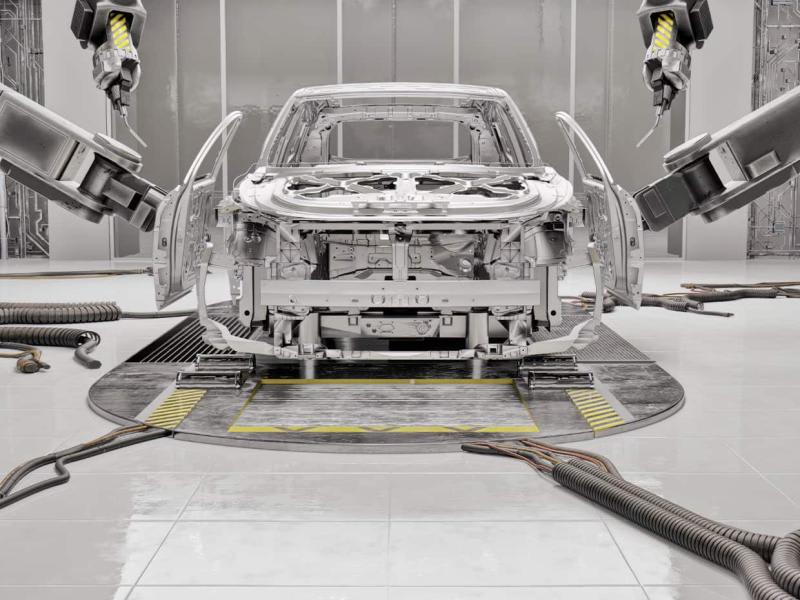The automotive sector has always been fast-moving. Whether it’s hedging bets on electric vehicles (EV), exploring new business models, or adopting futuristic technology, it seems as though the industry is perpetually challenged. Unfortunately, the recent pandemic halted progress and reduced production to just a trickle for over a year. To add insult to injury, just as signs were trending towards a promising resurgence for the automotive industrial machine, the war in Ukraine served as a reminder that sometimes it’s not our hands on the wheel.
Conflict drives uncertainty
The war has caused ripple effects that have been felt worldwide. The EU, in particular, has borne the brunt of these effects, thanks in large part to its reliance on Russian fossil fuels. The region now finds itself in a rather delicate and complicated situation, one that has had a significant impact on the automotive industry and its ability to fulfil demand and revolutionise the sector.
The conflict has increasingly constrained the flow of energy supply into Europe, which is now threatening the industrial ambitions of the entire continent. The EU was poised to be one of the big players in the development and adoption of EV, but now it looks like we may have to wait a little longer to realise the gleaming utopia we’d been promised; or, at the very least, in the manner in which we’d originally envisioned it.
It is important to remember that Europe has enjoyed an extended period of relative peace since the second world war, so many of these automotive manufacturers are ill-equipped to deal with this type of challenge. A scenario where Russia decides to cut off all gas supplies to Germany this winter could have massive implications on production, both long and short term. A shock like that would deal a significant blow to EU economies, many of which are already bracing themselves for an impending recession. What’s worse, there is no legacy information to inform these companies. The last time Europe was in wartime, assembly lines were mostly manned by human workers.
The nearshoring narrative
The combination of the war and the recent pandemic seems to have strengthened the resolve of western governments to reduce their reliance on foreign suppliers. However, the reality is that nearshoring production is not as simple as it sounds. The dynamics of supply chain production have become too complex to simply pack up shop and move elsewhere. The globalisation of supply chains has been happening for decades now and reversing these actions will not be an overnight process.
It is not just the war that’s causing trepidation; we are also witnessing the attempted decoupling of the US, UK, and Japanese economies from China, which is a strong signal of where things are going. Apple sent up a flare recently by announcing that they were going to step away from their dependence on Asian chip production. This pointed to a trend where developed economies of the world are starting to move away from their current laissez-faire approach to manufacturing, and towards refocusing on organically growing their own industrial economies. Thanks to its strong desire to reduce its dependency on China, the US is even exploring how to jumpstart its own microchip economy. This probably wouldn’t provide the required relief for another two or three years, but it is a start.
The entire ongoing geopolitical shift – the tensions, the security competition, the antipathy – is not going away anytime soon. The justification of trade constraints, due to national and economic security, provides signals to manufacturers as to where they should produce. In order to enter the US market, you must now have manufacturing bases in the US. This will all take time to unfold, but the fact that the United States has put $50B in subsidies on the table, gives you a sense of the gravity with which these economies are treating the current geopolitical climate.
Functional trade-offs
There has been some concern that tensions between China and Taiwan will impact the already-strained automotive supply chain, particularly in regard to battery and EV production. The truth is that, at worst, this may simply result in a slightly slower rollout of EV than we were all hoping for. We’ve seen it happen before.
In 2010, in the wake of a huge recession, renewables were such a hot-button topic that the US government handed out huge subsidies to the renewable energy market. The result of that investment is that Texas, once the national talisman of North American petroleum production, now gets 45% of its energy from renewables. If you had said that to someone twelve years ago, they would have laughed at you.
The US and its trade allies will eventually develop their own capacity to produce battery tech. It is not that the capability and the resources don’t exist on American soil – they do. For example, the Salton Sea in California has the capacity to provide up to 30 years’ worth of mineral supplies. It’s just that public perception of late has been opposed to the concessions necessary to decouple from China. Battery production can carry a significant environmental price tag, and right now the national sentiment towards sustainability is not one of compromise.
Playing catch-up
One of our biggest challenges in the West is that our democracies have been asleep at the wheel while China was making huge investments in Africa. By cornering that market, China has effectively narrowed the West’s options drastically. The position we find ourselves in now, from a geopolitical standpoint, is that we have swapped Russia and fossil fuels for China and batteries. As a result, we are going to see increased competition for establishing a presence in South America and Africa.
Whatever the case, the automotive industry remains a pawn in a much larger game. How this all shakes out is anyone’s guess, but one thing’s for sure: conflict is bad for business.






